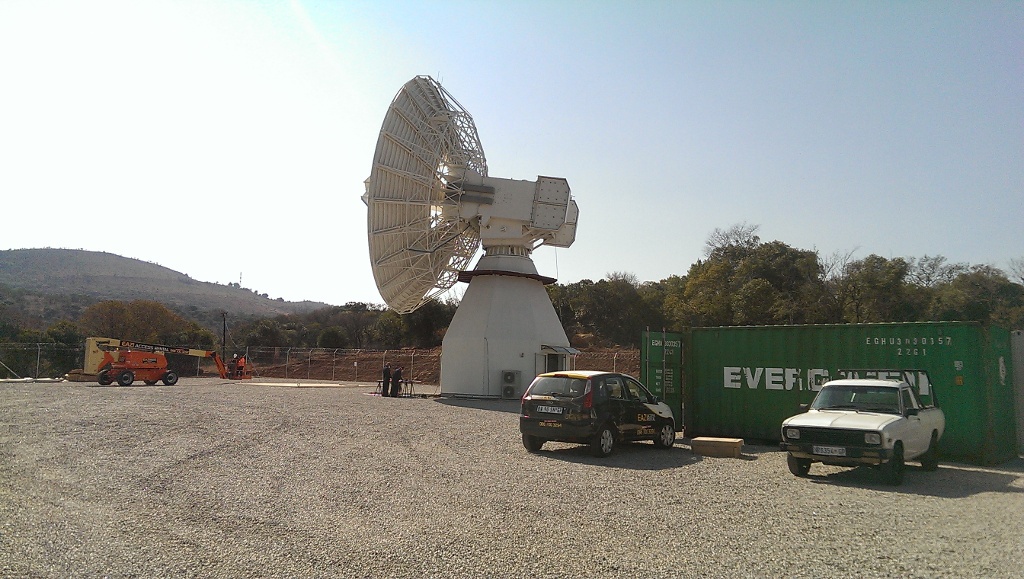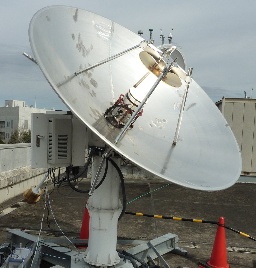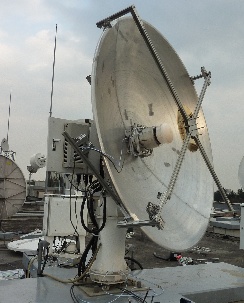...
Gerhard Kronschnabl and Alexander Neidhardt - 24 Feb 2016
HartRAO
Current status: Last concrete to be poured on 8 December 2016. Antenna will arrive around February 2017.
Photos from HartRAO construction site (1 December 2016)
Panel alignment is underway (last results were around 90 microns).
Commissioning tests are to be started in the beginning of August.
We have a live camera feed up and running (updated every minute) which can be accessed at: http://www.hartrao.ac.za/xxvgs_liveview.php
Photos from HartRAO VGOS site (14 July 2017)
Currently there is a camera installed on site, however there is no network connectivity yet. For updated videos and photos please visit:
...
Philip Mey - 1 Dec 201621 July 2017
Ishioka
- Operation of Ishioka antenna is now under interruption because of construction of operation building, and will resume after April.
- Modification of cryogenic dewar for QRFH system is being done.
...
Jim Lovell - 26 May 2016
Kashima 34m
- Our station is still single linear (V) polarization. Planning to enable dual (VH) polarization at Kashima 34m in near future.
- Broadband 24h experiment has been conducted about 10 times between MBL1-MBL2-Kashima34 network. After replacement of 1.5m->2.4m dish at MBL2 station, Performance has been improved more than 4 times. Collecting are of the dish is factor 2. Efficiency was aslo improved by modification from prime focus optics with QRFH(Rindgren) to Cassegrain focus optics with NINJA(NICT) feed. This is correlation amplitude between Kashima34(O)-MBL2(B) baseline for scans of 3C84 at Eleveation angle above 80 deg. Four of each symbol of the plot indicated as A, B, C, D are frequency band from lower side, though they are not constant for all the sessions. Center frequency of the frequency array were [3.7, 5.3, 10.1, and 13.3GHz] for 26th Jan., [5.9, 7.1, 8.7, and 10.6GHz] from 12th Feb. to 25th Nov., and [3.8, 5.9, 8.7, and 10.6GHz] for 9th Dec.
- We are going to replace the dish and feed at MBL1 too in March.
- If any station can do broadband fringe test observation (1GHz bandwidth for single channel), we are pleased to be a counterpart of the experiment. We will make correlation and provide the results.
- We replaced 1.6m dish with 2.4m Cassegrain optics of MARBLE1 station at NMIJ(Tsukuba) in March. Now we have two 2.4m dish at NICT(Koganei in Tokyo) and NMIJ( Tsukuba)
Marble1
(Tsukuba)Marble2
(Koganei)
- Broadband observation sessions conducted in 2016 were performed with 2048Msps-1bit-4ch mode. Frequency array was:
Lower_edge ( Center Freq)=
3188MHz(3700), 4788MHz(5300), 9588MHz(10100), 12788MHz(13300)
5388MHz(5900), 6588MHz(7100), 8188MHz(8700), 10088MHz(10600)
3288MHz(3800), 5388MHz(5900), 8188MHz(8700), 10088MHz(10600) - If any station can do broadband fringe test observation (1GHz bandwidth for single channel), we are pleased to be a counterpart of the experiment. We will make correlation and provide the results. Frequency array can be arranged flexibly.
- Comments on Broadband Observation.
- Broadband Data acquisition has advantage in tolerance to RFI. It is preferable to be broadband at the stage on analog/digital conversion.
- I prepared a stuff on RFI for TOW meeting at Haystack. It tells our status of receiving signal and RFI conditions.
- URL: http://www2.nict.go.jp/sts/stmg/ivstdc/siryou/2017/IVS-TOW/RFI-TOW2017sekido.pdf
Mamoru Sekido - 26 AprMamoru Sekido - 26 Jan. 2017
Yebes
We are taking part in the biweekly 24 hour VGOS tests. For those observations we use 4 RDBE-G units, 500 MHz bandwidth each band and polarization. We do not plan to make any hardware update in the near term. Our next mid-term goal is installing a combination of filters that will filter out frequencies below 3 GHz but will allow the passage of the legacy S band. That should allow us to install two amplifiers per polarization and not saturate the optical fiber amplifiers.
...
G. Tuccari - 26 May 2016
We are working for exchanging 1.6m dish with 2.4m dish of MARBLE1 station at NMIJ(Tsukuba).





